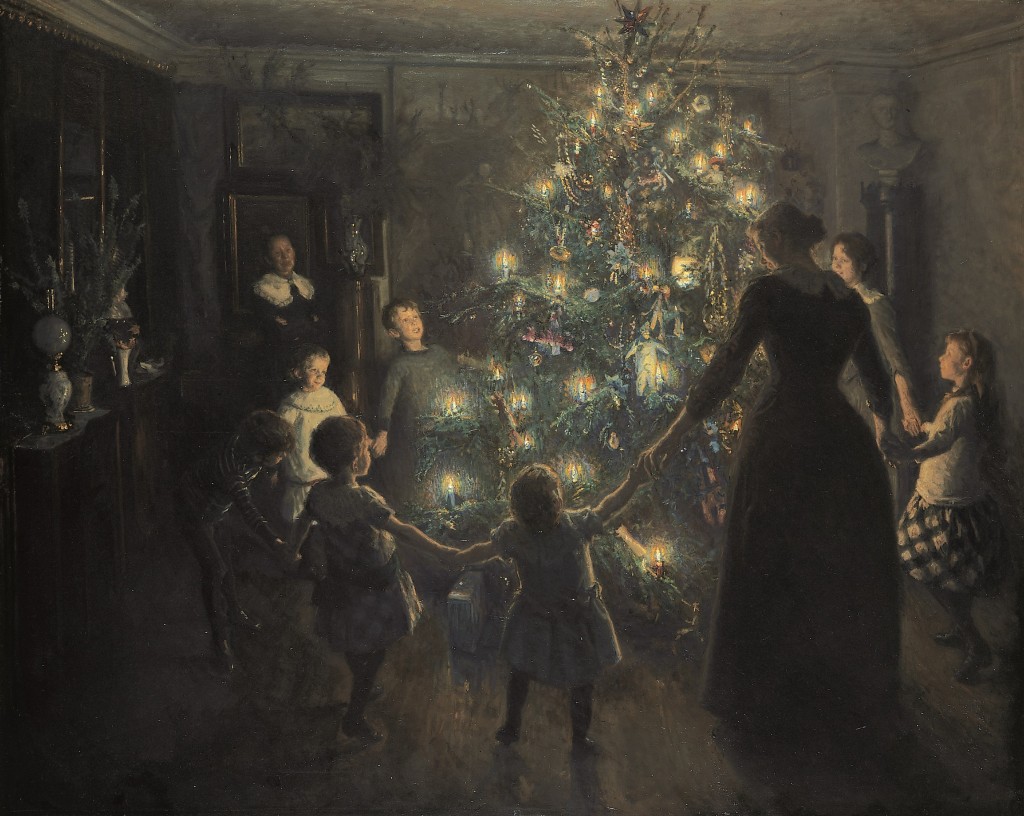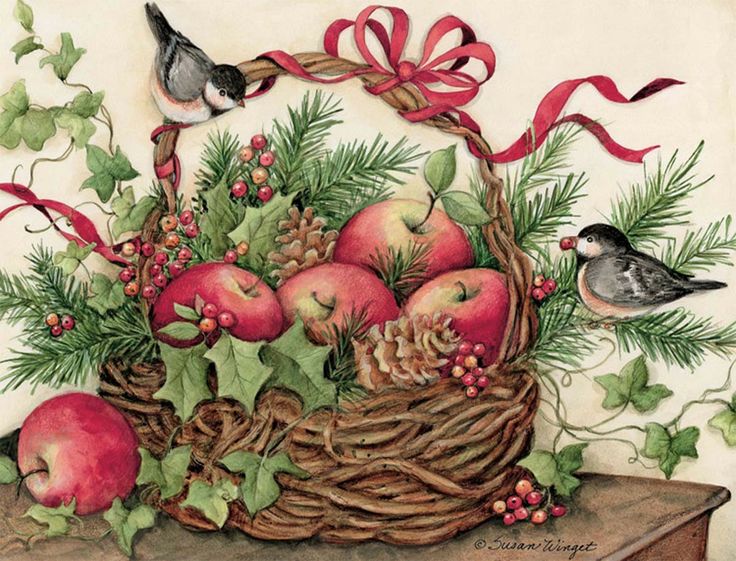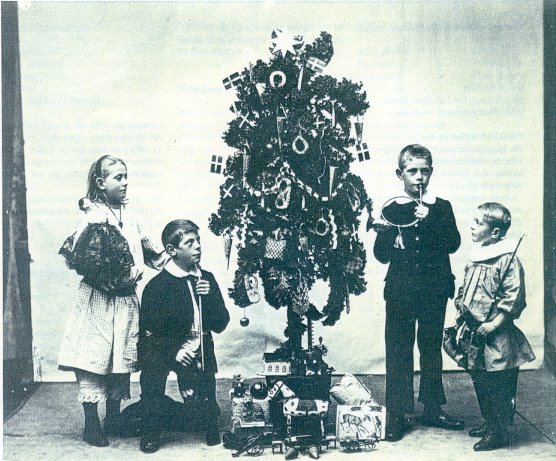Christmas History
Danish Tradition?
The festive decorated Christmas tree with feathery light is seen by many Danes as the traditional focal point of Christmas celebrations. However, it is in fact not the case. In fact, the Christmas tree is a German tradition, which is not so old after all.
Actually, it was about the First World War (1914-18), the Christmas tree became quite common in Denmark. The nature of Christmas tree decorations have also changed somewhat over the years and do it consistently. New trends are introduced in this field, and successive generations mixes childhood traditions with new ones created in their own families.
Garnish Reflect Time
The individual family’s economic standing has also played a role in the level and range of ornaments for the Christmas tree. The same applies for the country’s current economic and political situation, which among other things appeared during World War II. Material shortage called for ingenuity – and never before or since have so many Danish flag adorned the trees and living rooms, since the national sentiment had to be demonstrated.
Different types of Christmas trees has also surfaced over the years. The common spruce was what was meant by the original Christmas tree, and that is stille the situation in many optics. However, different species of fir, especially Original Nordmann fir, have seriously intruded into the Danish, well the entire European market, partly because of the eminent durability.
Golden Times on the Way
Traditions change all the time, but light in some fashion have always been there. Red and white candles have been dominant in a few generations. But going further back, the lights were cast in many colors.
After World War II we lacked almost everything in Denmark, but not the imagination to decorate the Christmas tree. In most homes you had to re-molding Christmas lights of candle stubs. Today, the electric light bulbs have gradually taken over. There has probably never been sold so many electric fairy lights in recent years and it is probably a natural development. In addition, electric lights can be reused in all of Christmas. They constitute no danger of fire, and with strings of lights you can also illuminate the fir trees in the garden.
Bluntly put, Christmas is very much a festival of lights. In the middle of winter, we are already fed up with darkness. We use a lot of light; it keeps our spirits up and strengthens the urge and the prospect that the bright times return. It is no coincidence that among other roses and apples formerly constituted a prominent part of the tree decorating: a notice and expressions of hope for brighter and nicer days.
Grundtvig was against the Christmas Tree
Already in the years of 1400-1500 German craftsmen held a kind of Christmas party where a large decorated fir tree was put into the guild hall for Christmas. The tree stood for the Three Holy Kings and the member’s children were allowed to take the small gifts hanging on tree branches. Private people probably also had a Christmas tree, because there are laws that prohibit you for just go into the woods and cut a tree for Christmas. Some places there were even guardians who made sure, that only those who were allowed cut trees into Christmas trees dit it. In Strasbourg in the 1600 there were private trees adorned with glitter cases, paper roses, sugar matters and dolls.
During 1800’s first decades the tree began to be seen widely across Denmark, not least among priests and teachers who wouldn’t stand back for Copenhagen citizen homes. Some of the first provincial Christmas trees caused considerable stir. As when teacher Jorgensen in Kolding lit his wood in 1822, and people came rushing because they thought there was a fire.
It was not everyone who cared about the new idea. Grundtvig, who is the author of many of our Danish Christmas carols, believed that it was “an expression of a watered-down Christianity” and that it should be “plucked up with the roots”. That’s how he wrote in the journal “Dannevirke” in 1817. Already six years after he had apparently surrendered and now believed that the tree was sent from God and therefore acceptable.
The trees had also gained ground in many of his colleagues home. Ingemann for example was fascinated by the tree, which he first saw at a Christmas party with his fiance in the 1815th.
Christmas Trees of kale
It took some years before the Christmas custom manifested itself broadly. First around World War I the Christmas trees were widespread outside the bourgeoisie. And even after this time it was far from anyone who could afford to acquire a tree with lights and ornaments. But there’s little doubt that the practice was accepted. It shows by the many stories about how families in so-called work homes used substitutes and homemade trees. The creativity was great; there was trees made of kale sticks and branches, and camouflaged broomsticks were adorned with candles which was cut through to save money. Also trade unions used the Christmas tree and arranged meetings for member’s children.
Source: www.historie-online.dk


